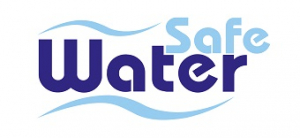Membrane Separation
Membrane separation is promising technology in water and wastewater for conventional and emerging contaminates. are classified, based on the type of driving force they use. The different type of driving force that separate the water includes: a pressure differential and reverse ; and a electrical force with to an ion exchange that facilitate migration of ions through the, electro and electrochemical devices).
Based on the pore sizes the Pressure-driven membrane processes are divided into reverse osmosis (RO), microfiltration (MF), nanofiltration (NF) and ultrafiltration (UF). In Figure 1 the different type of membranes and their mechanism are shown.
The selectivity between MF and UF is typically based upon pore size number (diameter of the micropores in a membrane surface) or molecular weight cut-off (MWCO) number. Reverse Osmosis also can be used to desalinated water as well as other contaminates.


Electrically driven (ED) membrane processes, commonly used in water/waste water treatment, also include electrically driven reversal (EDR) membrane processes. ED and EDR use a difference in electrical potential to induce dissolved ions to migrate through a water-impermeable membrane. This reduces their concentration in the feed water.
The anions (negatively charged ions) move in the direction of the positively charged electrode (anode) and are transported through the anionic membrane, but are restrained at the surface of the cationic membrane. The end result is a ‘dilute’ stream with a reduced salt concentration and a concentrate stream with a higher salt content than the feed water.

Choosing the Right Membrane
Membrane technology selection should be based on type of water and the treatment objectives at the lowest possible cost. In the following Table , typical pressure driven membrane process and application are shown.
Watersafe is an expert in design, procurement and installation of different membrane technologies.
| Process | TARGET COMPONET | PERATING PRESSURE | PROCESS APPLICATION |
| RO | 99% of most ions, most organics over 150 MW | 15-70 bars | Brackish sea water, desalting, boiler feed, purification, pre-treatment to ion-exchange, |
| NF | 95% divalent ions, 40% of monovalent ions, organics greater than 200-300 MW | 9- 20 bar | Hardness removal, organics and microbiological removal, dye desalting, color removal |
| UF | Most organics over 1000 MW | 2-9 bars | Pre- and post-treatment to IX, beverage clarification, removal of pyrogens, bacteria, viruses and colloid, dilute suspended oils |
| MF | Small suspended particle greater than 0.1mm | 1.5-4 bars | High volume of removal of suspend solids
|

Leave a Reply
Want to join the discussion?Feel free to contribute!